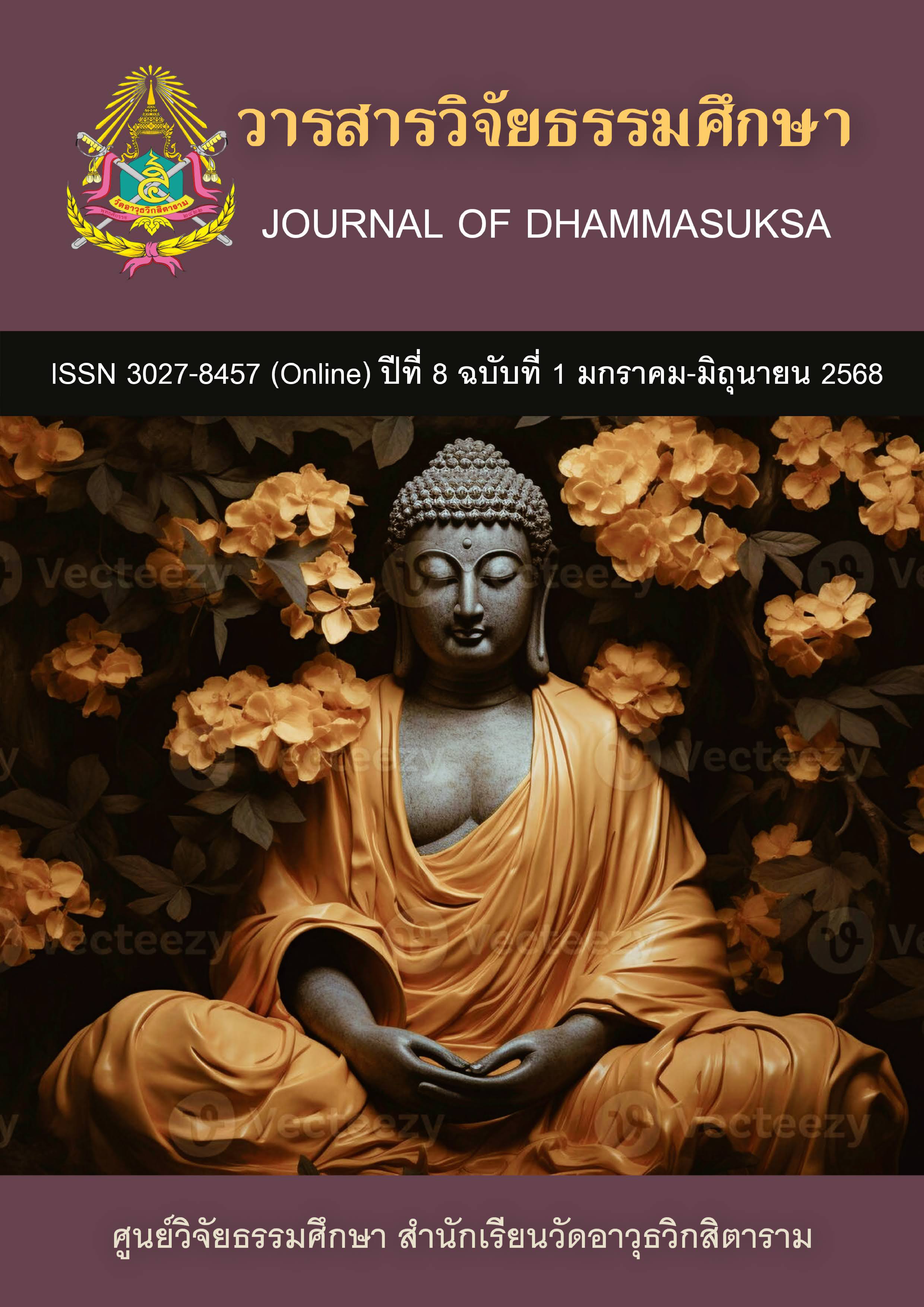EFFECTIVENESS OF ART DESIGN EDUCATIONAL ADMINISTRATION IN NON-ART COLLEGES AND UNIVERSITIES UNDER LIAONING PROVINCE
คำสำคัญ:
Educational Effectiveness, Administrative Effectiveness, Art Designบทคัดย่อ
The objectives of this research were: (1) to examine the components of effectiveness of art design educational administration in non-art colleges and universities under Liaoning Province; and (2) to develop the managerial guidelines for effectiveness of art design educational administration in non-art colleges and universities under Liaoning Province.
The research was a mixed methodology research, including qualitative and quantitative research. Population included 3,618 professional instructors, educational administrators from 46 non-art colleges and universities under Liaoning Province . The sample size was determined by Krejcie and Morgan’s Table (1970), obtained by a stratified sampling method, totaling 346 samples. The key informants were 9 experts with more than 5 years’ experience in art design education and educational administration in Liaoning Province. The instruments used for data collection were semi-structured interview, questionnaire surveys, and focus group discussions. The statistics used for data analysis were frequency, percentage, mean, Standard Deviation (S.D.) and Exploratory Factor Analysis (EFA) as well as content analysis was employed.
The research findings revealed that; (1) there were five components of effectiveness of art design educational administration in non-art colleges and universities under Liaoning Province which consisted of Development and Cultivation of Students’ Talents, Effective Administration with Work Motivation, Achievement of Organizational Goals in Educational Output and Good Reputation, Effective Educational Leaders and Organizational Atmosphere and Culture; and (2) there were total 30 managerial guidelines of Effectiveness of Art Design Educational Administration in Non-Art Colleges and Universities under Liaoning Province.
เอกสารอ้างอิง
Best, J. W.(1977). Research in Education. Englewood Cliffs, New Jersey : Prentice Hall, Inc.
Cai, J. (2000). Transformational Leadership and School Effectiveness. Taipei: Shuyuan, Normal University.
Cao, B. (2021). Integration and Reconstruction of Basic Design Courses: Taking the Teaching Experiment of Nanjing University of the Arts as an Example. Nanjing University of the Arts, China Jiangsu Province, Doctoral Dissertation.
Cheng, J. (2008). Analysis of factors affecting school management. Education in Shanghai Scientific Research, (l),21-23
Chen, Q. (2001). School Efficiency Theory. Jiangxi Education Research, (6),25-26,34.
Cheng, Y. C. (1991). Function and Effect of Education. Hong Kong, China: Wide-angle lens Press.
Codianni, A., & Wilbur,G. (1983). More Effective Schooling from Research to Practice. New York: ERIC. Retrieved from: https://files.eric.ed.gov/fulltext/ED236299.pdf
Davis, G. A. & Thomas, M. A. (1989). Effective schools and effective teachers. Boston, MA: Allyn and Bacon.
He, R., Xiao, D., & Yuan, X. (2010). Preliminary Exploration on Practical Teaching of Design Major for Internationalization. In Tong, H.(Ed.), New Opportunities for Industrial Design education: Collected Papers of 2010 the Pearl River International Industrial Design Education Forum (pp.31-36). Beijing Institute of Technology Press.
Hou, L. (2013). Cultural Transformation and the Reform of Undergraduate Education Curriculum Design of Design Discipline in China Today. Central Academy of Fine Arts, Doctoral Dissertation.
Huang, Z. (1989). School Management and Performance. Taipei: Shuyuan, Normal University.
Institute of Design Culture and Policy of School of Design of Central Academy of Fine Arts [IDCPSD of CAFA].(Ed.). (2013). Design Education: 2007-2012 China's higher design education map. Song Ya Feng That’s Art, 3(16).
Izquierdo, I., Díaz,J.O.& Abad,F.J. (2014). Exploratory factor analysis in validation studies: Uses and recommendations. Psicothema,26(3):395-400.
Kaiser, H.F., & Rice, J. (1974) Little Jiffy, Mark Iv. Educational and Psychological Measurement, 34(1), 111-117.
Ministry of Education of the People’s Republic of China (PRC).(2013, August 16). The 2012 National Statistical Bulletin on The Development of Education. Retrieved from: http://www.moe.gov.cn/srcsite/A03/s180/moe_633/201308/t20130816_155798.html
Muijs,D., Campbell,J., Kyriakides,L., & Robinson,W.(2005). Making the case for differentiated teacher effectiveness: An overview of research in four key areas. School Effectiveness and School Improvement,(16), 51-70.
Research Group on Development Strategies of Chinese Art Design Education of Academy of Arts and Design of Tsinghua University[TUAAD].(Ed.). (2010). Research on the Development Strategy of Art Design Education in China. Beijing: Tsinghua University Press.
Reynolds, D.& Teddlie, C. (2000). An Introduction to School Effectiveness Research. NY: Falmer Press.
Reynolds, D., Teddlie, C. & Schaffer (2003). World class schools’ international perspectives on school effectiveness. New York: Routledge Falmer.
Rowan,B. (1985). The assessment of school effectiveness. In Kyle(Ed.),Reaching for excellence:An effective schools sourcebook(pp.99-116).Wshington:U.S. Government Printing Office.
Shahi, S.(2013). Business sensible design: Exploratory research on the importance of considering cost and profit for undergraduate industrial design students. University of Cincinnati, United States – Ohio. Master Dissertation. Retrieved from https://www.proquest.com/dissertations-theses/business-sensible-design-exploratory-research-on/docview/1469008079/se-2 .
Sun, M. (Ed.) (2008). The Theory of Educational Effectiveness. Commercial Press.
Tang, L. (2006). School Factors of School Effectiveness. Education in Shanghai Research, (8),30-34.
Tu, J.(2020, May 10). General education Experiment course and virtual simulation experiment construction based on college students' Core Competence Training under the background of new liberal arts,A report delivered at the Conference about the Development and Construction of Virtual Simulation Experiment Teaching of National Comprehensive Experimental Teaching Demonstration Center under the Background of New Liberal Arts, The General Literature Group joins The National Experimental Teaching Demonstration Center and Liaoning University, Network Conference.
Tu, J., Liu, L.,& Wu, K.(2018). Study on the Learning Effectiveness of Stanford Design Thinking in Integrated Design Education. Sustainability, 10(8), 26-49. Retrieved from https://www.proquest.com/scholarly-journals/study-on-learning-effectiveness-stanford-design/docview/2110057243/se-2 .
Ubben,G.D., Hughes,L.W.,& Noris C.J. (2004). The Principal: Creative Leadership for Effective Schools. Chongqing University Press.
Wang, S. (2011). Comparison and Innovation of Design Curriculum Contents in Chinese and British Art Colleges. Harbin Normal University, Master's Dissertation.
Wen, H. (2007). Exploring the Basic Theoretical Issues of School Effectiveness. Education Research, (2), 57-159.
Yuan, X. (2014). Research on the Development of Modern Design education in China. Southeast University Press.
Zhu, W. (2011). Talking about Innovative Thinking and Research on College Art Design Curriculum from the Innovation Studio. Shenyang Normal University, Master's Dissertation.
ดาวน์โหลด
เผยแพร่แล้ว
รูปแบบการอ้างอิง
ฉบับ
ประเภทบทความ
หมวดหมู่
สัญญาอนุญาต
ลิขสิทธิ์ (c) 2025 วารสารวิจัยธรรมศึกษา

อนุญาตภายใต้เงื่อนไข Creative Commons Attribution-NonCommercial-NoDerivatives 4.0 International License.



